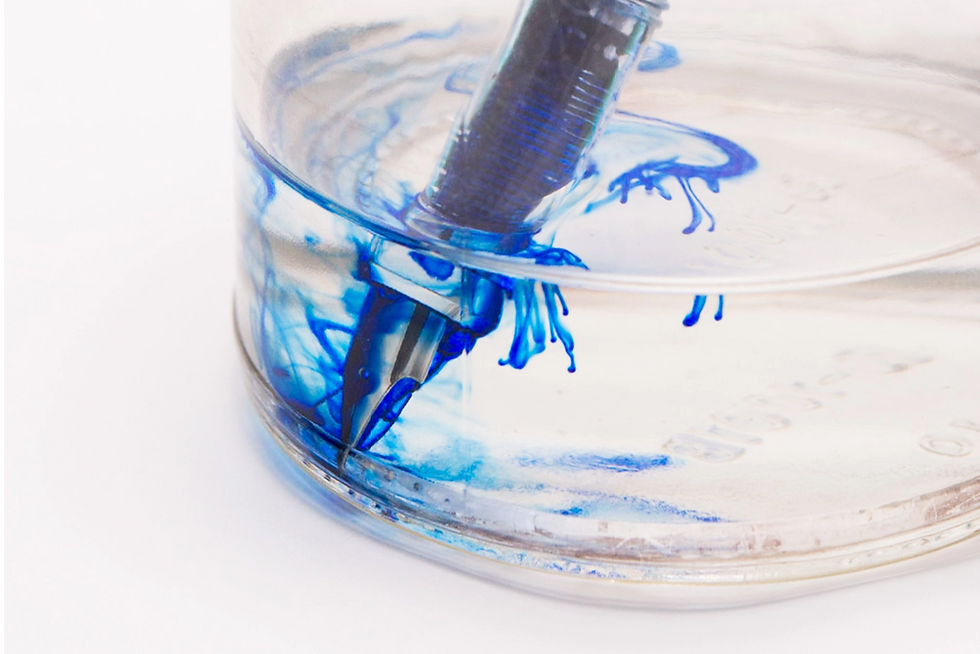How to properly care for and clean your fountain pen.
- seishinpens
- 11 hours ago
- 2 min read
Just like any tool, fountain pens must be cared for and kept clean to ensure they function they way they are supposed to. Dust, dried ink, and improper usage can lead to poor performance, or even damage to your fountain pen.
Caring for a fountain pen involves a few simple habits to ensure its longevity and smooth performance. The most important rule is to prevent ink from drying out in the nib and feed, as this can lead to clogging and poor ink flow. This is best achieved by using the pen regularly; writing a little bit each day keeps the ink moving and lubricates the system. When storing your pen, it's best to keep it capped and store it laying flat or with the nib pointed upwards. This helps prevent ink from pooling in the nib, which can lead to leaks or a dried-out tip; and keeping the cap on it prevents it from collecting dust and other contaminants that can interfere with proper ink flow.
Regular cleaning is essential for fountain pen maintenance. It's a good practice to clean your pen at least once a month, or whenever you switch ink colors. To clean, remove the ink cartridge or converter and flush the nib and grip section with cool or lukewarm water until the water runs clear. A bulb syringe can be particularly useful for quickly and effectively flushing out the old ink. Avoid using hot water, which can damage the pen's materials. After flushing, dry the pen with a soft cloth or tissue and allow it to air-dry completely before reassembling and inking it.

The body of the fountain pen should be kept clean using a delicate, dry cloth or tissue. If using a tissue, be sure it does not have lotion in it. It is ok to occasionally use a light furniture polish to wipe down the body of your fountain pen to restore some of its luster.
Beyond cleaning, proper handling is key. The nib is a delicate component and should be treated with care. Avoid pressing down too hard when writing, as this can misalign the tines and cause a scratchy writing experience. Always cap the pen when not in use to protect the nib from damage. Finally, use only inks specifically designed for fountain pens. Other types of ink, like Indian or pigmented inks, contain particles that can clog the pen's intricate feed system and cause irreparable damage. By following these simple steps, your fountain pen will provide a beautiful writing experience for years to come.




Comments